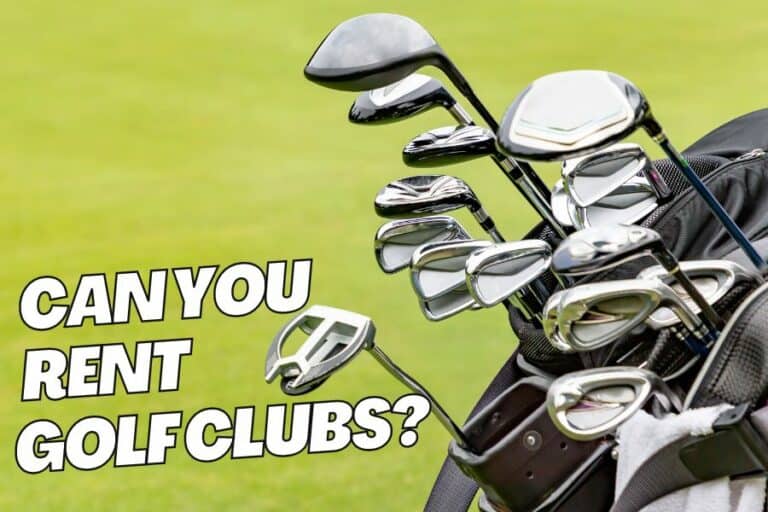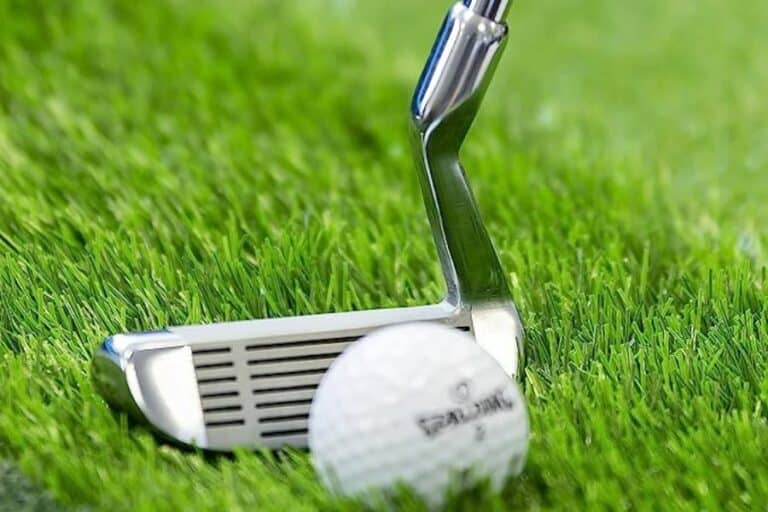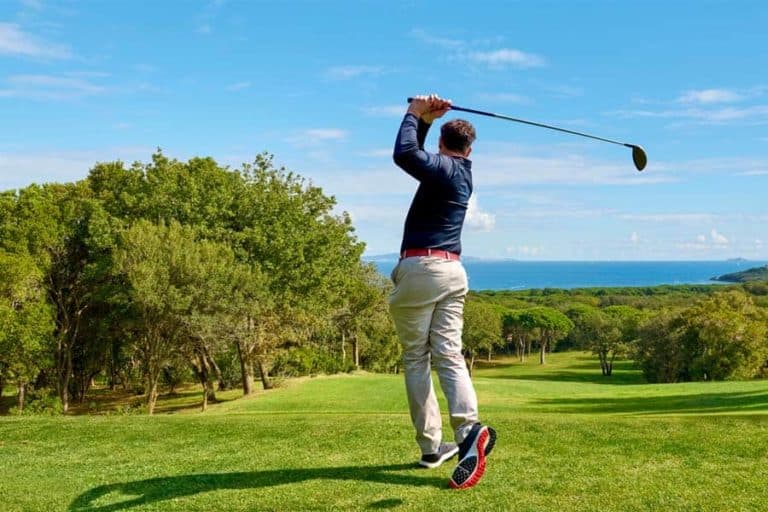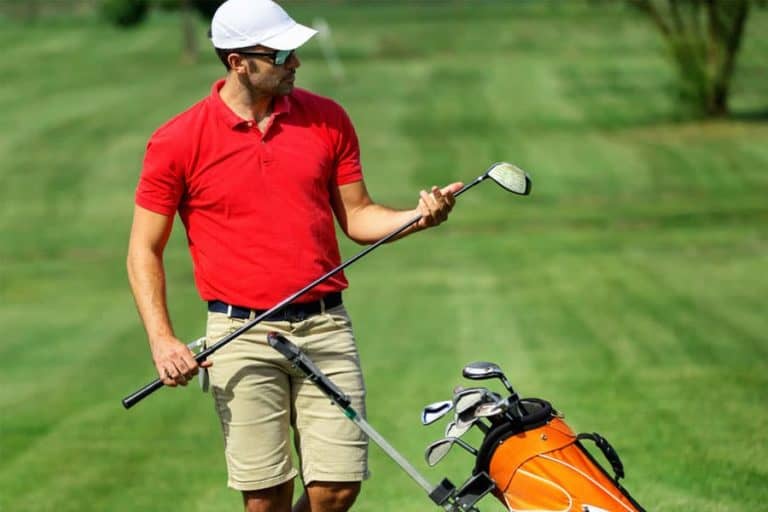How To Hit Irons Like A Pro?

Irons are the most used clubs in golf, and understanding how to hit irons properly is essential for game improvement. Here are tips to help you.
Hitting irons is essential for any golfer to improve their accuracy and control over the golf game. Irons are used for various shots, from long approaches to short chip shots around the green. While hitting irons might seem intimidating initially, you can quickly become a more confident and consistent iron player with some practice and the proper techniques.
In this article, we’ll take you through the basics of how to hit irons, including grip, stance, alignment, and swing techniques.
I. How to hit irons – Tips to follow
Here are some tips to follow to get the most out of your iron shots:
1. Know your Irons
There are different types of irons for various purposes. Playing the wrong iron can negatively impact your game. Knowing how to choose the right iron for each situation will help you hit more accurate shots. Here are different types of irons that you should consider:
- Long irons (2, 3, 4): Typically used for long approach shots.
- Mid irons (5,6,7): Used to hit shots in medium-length distances.
- Short irons (8,9 and pitching wedges): Used for precise approach shots and chips.
2. Set up your stance properly
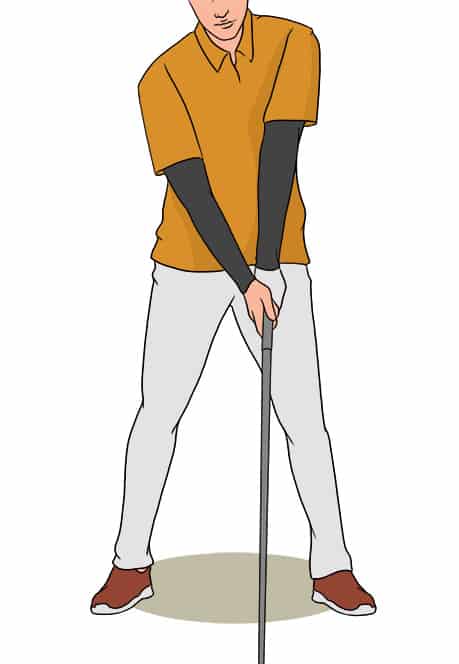
To master any golf club and make solid contact with the ball, you must ensure your stance is comfortable and solid.
Stand with your feet shoulder-width apart and the ball positioned slightly forward in your stance. Your weight should be evenly distributed on both feet, and your posture should be athletic and balanced.
Generally, many golfers make a mistake by taking a narrow stance with irons, making it hard to turn your body enough.
3. Know the right golf ball position
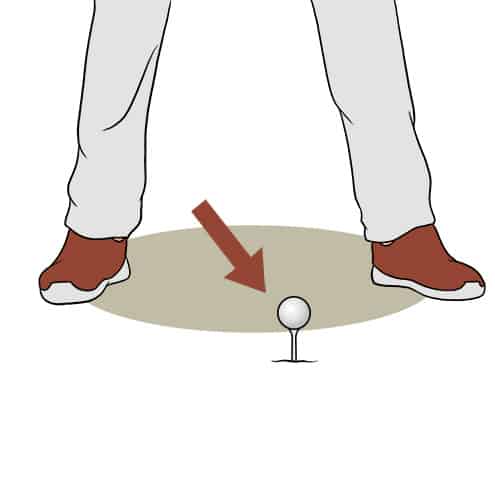
The position of your ball has a significant impact on how high your iron shots will fly. However, it is essential to adjust the ball position depending on which club you are using so that your shot can be as consistent and accurate as possible.
Place the ball using the ‘inches to iron number’ rule. This is the easiest way to remember where to place the ball. This rule means that the distance between your left heel and the ball corresponds with your iron number. For instance, with a 5-iron, the ball position should be 5 inches inside your left heel.
4. Understand the right angle for your club face
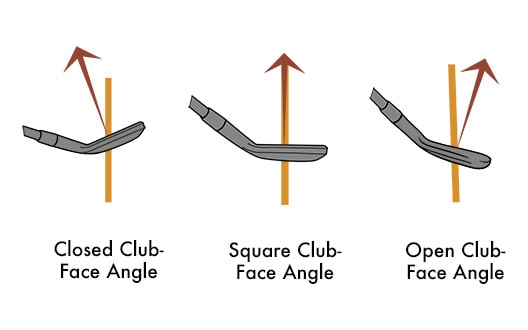
When striking your iron shots, the angle of the clubface at impact significantly influences where your ball will go. Here is how your clubface impacts your iron play:
- Open clubface: An open clubface refers to a clubface that is angled away from the target line. This can cause the ball to slice or hook and will usually result in less distance
- Closed clubface: A closed clubface refers to a clubface that is angled towards the target line. This will generally result in more distance but can cause your ball to fade or draw.
- Square clubface: A square clubface is when the clubface is perpendicular to the target line. This will generally result in a hitting the golf ball straight with maximum control and distance.
Thus, most golf professionals suggest players prioritize a square clubface when hitting the ball. Overcompensating by swinging with a closed face can lead to inaccurate contact and undesirable outcomes.
5. Master the steep angle of attack
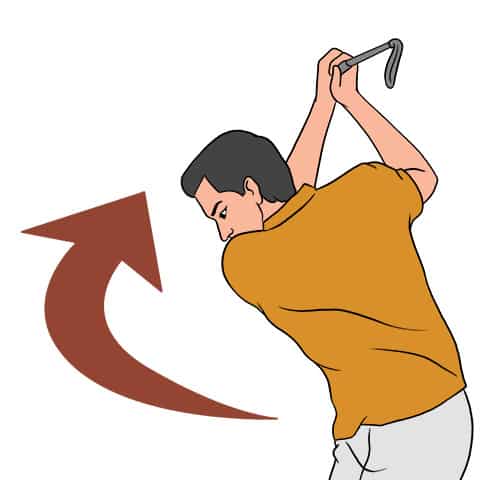
To hit an iron shot correctly, it is essential to understand how the angle of attack impacts your shot.
A steep angle of attack is a swing path that approaches the ball from a high angle, often with the club head descending steeply towards the ball at impact.
This golf swing can be effective for hitting iron shots because it helps to hit crisp iron shots that compress the ball and create a high, piercing trajectory.
Here are a few key things to focus on to master a steep angle of attack with your irons:
- Grip: Make sure you have a strong grip on the club. This will help you create a downward strike and promote a steep angle of attack.
- Posture: Set up with your weight slightly forward and your hands ahead of the ball. This will aid you in achieving the ideal forward lean of your club shaft at impact for optimum performance.
- Impact: At impact, make sure you’re hitting down on the ball and compressing it against the turf. This will help you create a crisp, downward blow and maximize the steepness of your angle of attack.
- Swing path: Focus on swinging the club on an inside-out path, with the club head approaching the ball from inside the target line. This will help you create a steep angle of attack and produce a high, penetrating trajectory. For example, if the club is moved too much inside on the backswing, there are more chances of creating an over-the-top swing arc. On the contrary, if it’s too far during the takeaway, it may result in an inside downward swing arc when the club hits behind the ball.
6. Don’t help the ball up
Most amateur golfers tend to swing irons with an upward motion, taking the club and ball in the wrong direction. This can cause problems like hitting fat shots and topping the ball, resulting in inconsistent shots.
There are a few reasons why helping the ball up can be problematic:
- Reduced distance
- Decreased accuracy
- Inconsistent contact
To avoid helping the ball up, focus on swinging the clubhead toward the ball and striking it with a crisp, downward blow. This will help you compress the ball against the turf and launch it into the air with the natural loft of the club. By letting the club do the work, you’ll be better able to hit consistent and good iron shots.
II. Proper swing techniques with irons
The proper swing position is crucial for executing a successful iron shot. Here are some tips to improve your swing technique:
1. Takeaway
When you begin your swing, make sure to take the golf club back smoothly and at a moderate pace. Keep your wrists steady and your arms straight. Avoid lifting the club too fast or bending your wrists too soon, as this can lead to an inconsistent swing.
2. Backswing
As you swing back, smoothly turn your shoulders and hips while keeping your spine angle intact. Shift your weight to your back foot, and ensure your arms are fully stretched.
Be cautious not to rotate excessively or lift your club too high, as it can result in a loss of control.
3. Downswing
The downswing is where the real action takes place. Shift your weight forward smoothly while keeping everything controlled. Keep your wrists steady and your arms straight, letting the golf club follow the right path down.
Concentrate on hitting the ball first and then making a divot afterward. This approach ensures clean and precise iron shots.
4. Impact
Getting the impact position right is key for a great iron shot. When you hit the ball, make sure your hands are in front of the clubhead, and your hips and shoulders are facing the target. Shift your weight to your front foot, and keep your arms straight with a forward-leaning club.
This setup ensures you strike the ball from above, leading to solid contact and the best ball flight.
5. Follow-through
Once you’ve hit the ball, let your swing continue smoothly, allowing the club to release naturally. Rotate your body toward the target, and make sure your arms fully extend. Steer clear of slowing down suddenly or stopping abruptly, as it can impact the accuracy and distance of your shot.
III. Common iron shot mistakes
Here are some typical errors that golfers often make when using irons:
1. Playing with wrong iron
The right irons offer control, accuracy, and versatility, allowing players to navigate diverse distances on the course. Properly matched clubs enable golfers to fine-tune their shots, adapting to different conditions and challenges.
This precision contributes significantly to overall performance, influencing the outcome of each swing. Consequently, using the right irons not only enhances gameplay but also ensures a successful golfing experience.
2. Trying to help the ball up
The most common mistake among amateur golfers with irons and wedges is attempting to lift the ball into the air. Everyone loves high shots landing softly on the green.
The trick is, you don’t have to force the ball up and let the club do the work.
3. Over the top club head
Consistent and effective iron shots come from mastering the technique of shallowing the golf club. Many skilled players share the ability to shallow the golf club, leading to more dependable ball striking.
Shallowing contributes to better ball control, added distance, and ensuring the ball heads in the right direction right from the beginning.
4. Over-swinging
Swinging too hard can result in less control and accuracy. Practice keeping your swing smooth and controlled, avoiding exaggerated movements or swinging too forcefully.
5. Not making a full shoulder turn
Many amateur golfers make the mistake of not turning enough on the backswing with irons compared to woods. Sufficient shoulder turn is crucial for a complete backswing with irons. Ensure you turn back and through, just as you would with woods.
IV. Benefits of hitting golf balls with Irons
Hitting golf balls with irons can be beneficial for several reasons. Here is a list of benefits that you’ll enjoy by using irons:
1. Increased control and accuracy
Irons are designed for precision, so they can be a good choice for golfers who want to hit the ball with more control and accuracy.
2. Greater versatility
Irons can be used for various shots, from approach shots to chips and pitches. This can be helpful for golfers who need to hit different types of shots in different situations on the course.
3. Greater distance
While irons may not be as long as drivers or fairway woods, they can still provide a good distance when hit correctly.
4. Better feel
Many golfers find irons have a softer feel than other types of clubs, which can be more comfortable and enjoyable to hit.
5. Easier to shape shots
Irons can be used to shape shots more easily than other types of clubs, which can be helpful for golfers who want to hit a draw or fade.
6. Better for chipping and pitching
Irons are often used for short shots around the green, such as chips and pitches. This can be helpful for golfers who want to improve their touch and feel around the green.
7. Stop the ball on the green
Golfers can achieve greater control over their game when utilizing higher-iron shots. When the greens are particularly slick and quick, a high-trajectory shot is often necessary to stop the ball from rolling too far away – or even roll it back a few feet! This implementation of extra loft gives golfers an edge on more challenging courses.
When faced with demanding playing conditions, high-flying irons are the perfect solution to give golfers more precision on approach shots.
Conclusion
If you are tired of hitting your shots low and watching the ball bounce and roll forever, you should practice hitting irons. Remember to practice proper technique and get comfortable with your swing before trying to hit the ball too hard. With a little time and effort, you will get better at ball striking and hit more accurate iron shots in no time.
FAQ’s
Do you swing the driver the same as an iron?
No, when you swing the driver, it’s wider, and there’s less wrist movement. But with irons, it’s more compact, and using your wrists is crucial for power and hitting the ground right. Lots of golfers start with their hands a bit forward during setup.
How should an iron swing feel?
When using irons, aim to hit the ball a precise distance, ensuring consistent proximity to the pin. Focus on driving down and through the ball with your right side (for right-handed golfers) to achieve clean and precise iron shots. Maintain a feeling that your chest stays level with the ball, avoiding any backward leaning.




